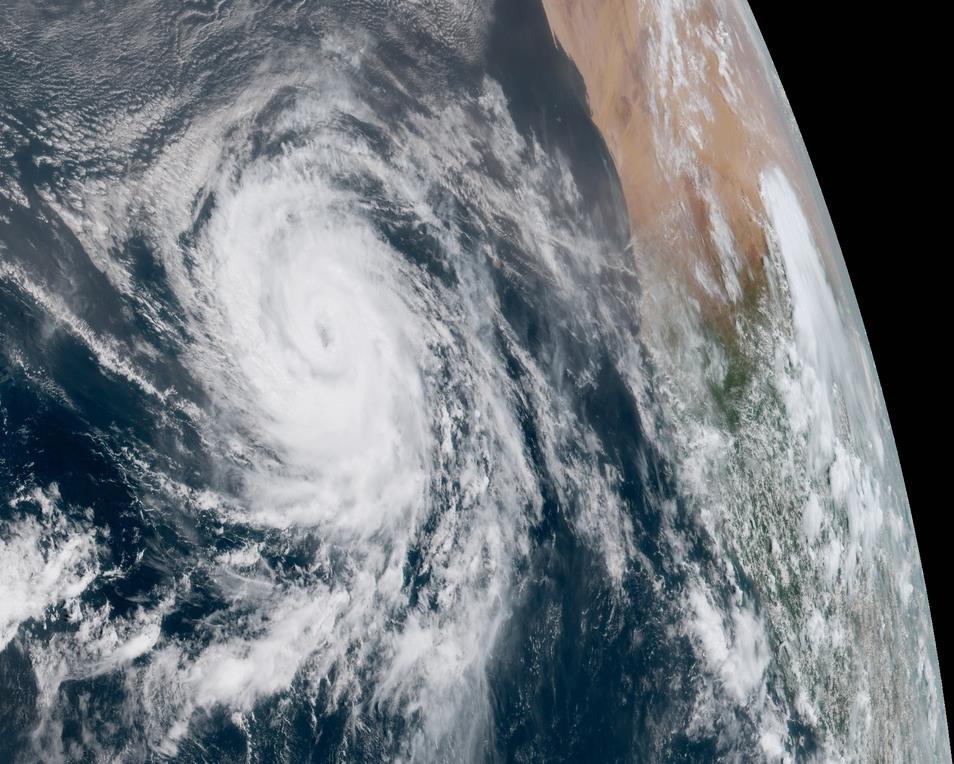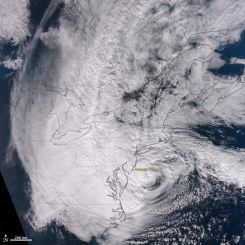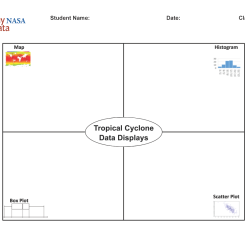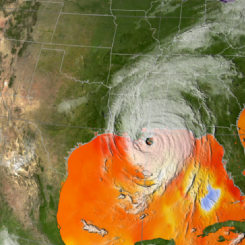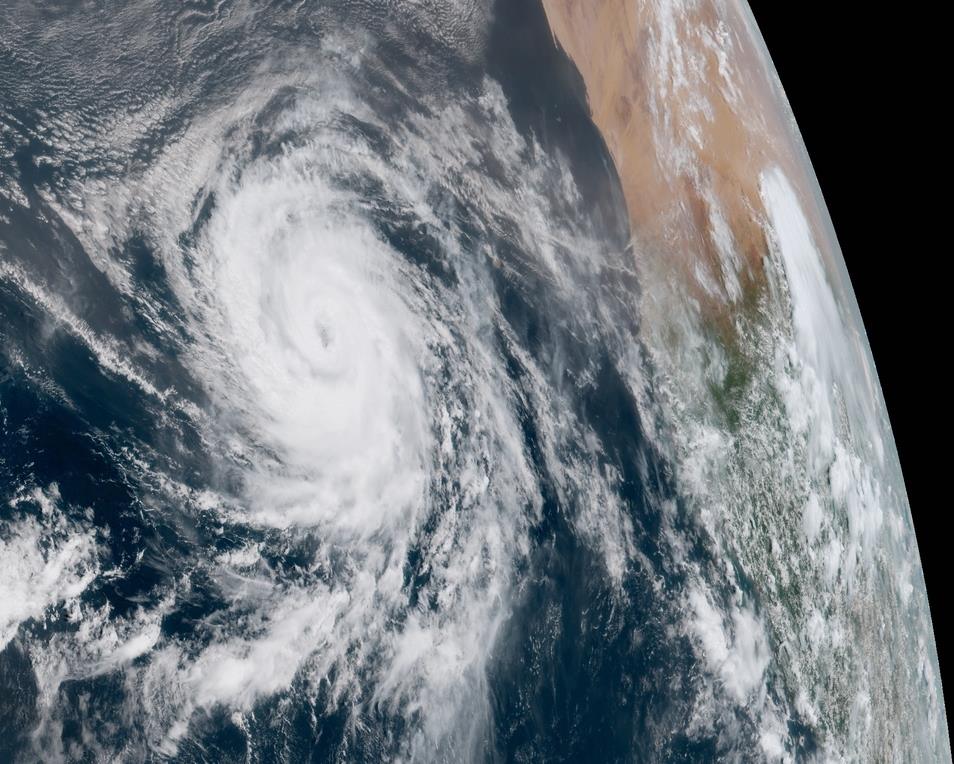Lesson Plans
Hurricane Katrina A Problem-Based Learning Module
Overview
NOTE: This archived content may contain outdated information or references that may not reflect current policy or programs.
Because it recognizes the importance of U.S. coastal areas to the nation's economy, the U.S. National Ocean Service has formed a task force that is studying the trends and impacts of hurricanes on coastal regions. They have invited your students to participate. In this activity, students are tasked with conducting an Earth systems analysis of Hurricane Katrina that will help answer the question "Is global warming causing an increase in hurricane frequency and intensity?"

Materials Required
- Computer
- Internet
- Student Pages
- Teacher Pages
Procedure
STUDENT TASK:
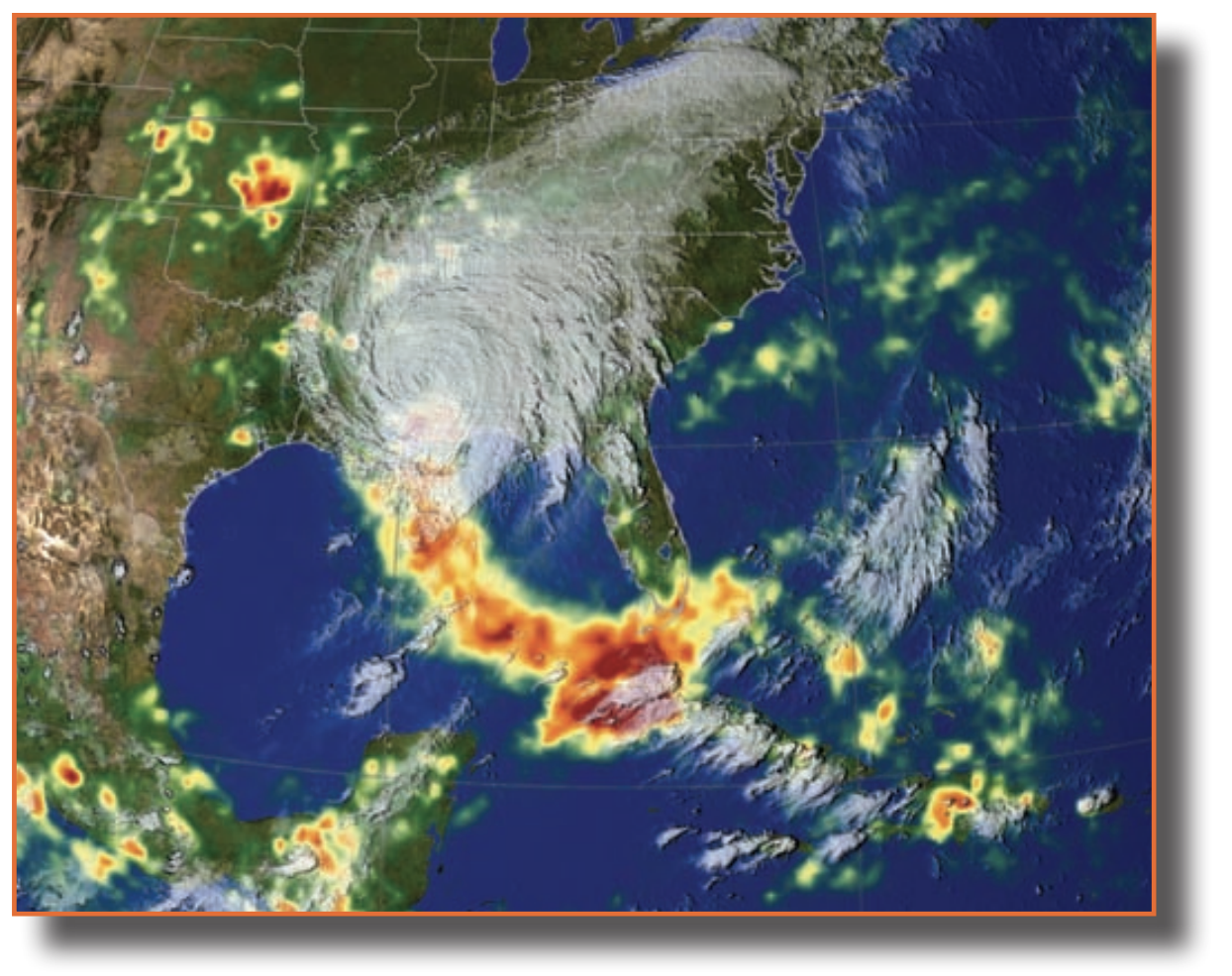
U.S. coastal areas are critically important to the nation’s economy. For that reason, NASA and the National Ocean Service have formed a joint task force that is studying the trends and impacts of hurricanes on coastal regions. They have invited your group to participate. You are tasked with conducting an Earth system science analysis of Hurricane Katrina. Your report should also examine the question: “How could future climate change impact the frequency and intensity of hurricanes?”
Working with your group, use the following problem solving model to do your project.
1. Read and analyze the scenario and task on pages 1–2:
- Discuss the scenario with your team.
- Don’t be tempted to start thinking about potential solutions or to start looking for information.
2. List initial hypotheses, ideas, or hunches:
- Based on what you have read, what do you think?
- List your ideas, hunches, or hypotheses.
3. List what you already know:
- Begin your list with the information contained in the scenario.
- Add knowledge shared by other group members.
- Record this information under the heading: “What do we know?”
4. List what is unknown:
- Prepare a list of questions your group thinks need to be answered to do your analysis.
- Record them under the heading: “What do we need to know?”
5. List what needs to be done:
- Develop a plan. List actions such as questioning an expert, getting online data, or visiting a library to find answers to the questions developed in Step 4.
- Prioritize the questions you are trying to answer, then divide up the questions among your team.
6. Develop a problem statement:
- A problem statement is a one- or two-sentence idea that clearly identifies what your team is trying to solve, produce, respond to, test, or find out.
- Record your statement.
7. Gather information:
- Record your information and resources.
- You and your team will gather, organize, analyze, and interpret information from multiple sources.
- Exchange ideas; think about solutions; weigh alternatives; and consider the pros and cons of potential courses of action.
8. Present findings:
- Prepare a report or presentation in which you and your group make recommendations, predictions, inferences, or other appropriate resolutions of the problem.
- Be prepared to support your positions. If appropriate, consider a multimedia presentation using images, graphics, and/or sound.
The steps in this model may need to be completed several times. Steps 2 through 6 may be conducted at the same time, as new information becomes available. As more information is gathered, the problem statement may be refined or altered.
Disciplinary Core Ideas:
- ESS2D: Weather and Climate
- ESS3B: Natural Hazards
- ESS3D: Global Climate Change
Crosscutting Concepts:
- Cause and Effect
- Structure and Function
- Stability and Change
Science and Engineering Practices:
- Asking Questions and Defining Problems
- Planning and Carrying out Investigations
- Analyzing and Interpreting Data
- Constructing Explanations and Designing Solutions
- Engaging in Argument from Evidence
- Obtaining, Evaluating and Communicating Information
- Analyze the problem's scenario and generate ideas
- Develop research questions, problem statement, and plan
- Gather background information
- Present findings
- How do hurricanes form and what fuels them?
- How are the individual spheres of the Earth System affected by hurricanes?
- How is climate change related to hurricanes?
Summer 2005 was winding down when what was to become a monster storm was just beginning to brew. Hurricane Katrina started as a tropical depression in the southeastern Bahamas on August 23. By the next day it had strengthened to a tropical storm and began moving slowly on a northwesterly, then westerly track gaining strength as it moved through the warm Atlantic waters. On August 25, just a few hours before the storm hit the coast of southern Florida, Katrina became a Category 1 hurricane. Moving across the tip of the Florida peninsula in seven hours, the storm's winds slowed only slightly. As the storm hit the warm waters of the Gulf of America it quickly picked up speed.
As the storm moved across the Gulf, atmospheric and sea surface conditions were perfect for fueling the storm, which exploded into a Category 5 hurricane on the morning of Sunday, August 28, with winds of 257 kilometers per hour (160 miles per hour).
Gulf Coast residents who survived Hurricane Camille in 1969, which had winds of more than 200 miles per hour, thought they had seen it all. A witness who was 12-years-old at the time, recalls "After about four hours of relentless winds and rain, all of a sudden there was silence outside, dead silence! We were inside the eye of the hurricane. The center of the eye actually made landfall in Pass Christian, Mississippi, which is about 12 miles west of where we were living. That's just how huge this storm was." But Katrina, while comparable to Hurricane Camille when it was at its peak strength, was a significantly larger storm and impacted a broader area of the Gulf Coast.
When Katrina came ashore on August 29, it became one of the deadliest and costliest storms to hit the United States. The National Climatic Data Center described Katrina as "one of the strongest storms to impact the coast of the United States during the last 100 years. With sustained winds during landfall of 125 mph (110 knots; a strong category 3 hurricane on the Saffir-Simpson scale) and minimum central pressure the third lowest on record at landfall (920 mb)." The storm caused widespread destruction along the U.S. central Gulf Coast. Coastal cities such as New Orleans, LA, Mobile, AL, and Gulfport, MS were hardest hit. Much of the damage was caused by the storm surge and levee breaks between New Orleans and Lake Pontchartrain.
Since 1995 there have been an increasing number of hurricanes, with 2005 going down in the record books with the largest number (27) of named tropical cyclones in history. The previous record (21) was in 1933.
The National Climatic Data Center reported that in 2005 "There were a record 27 named storms, of which 15 were hurricanes, exceeding the 1969 record of 12 hurricanes, and 7 were major hurricanes. Of the 7 major hurricanes, an unprecedented 4 reached category 5 status. The season was remarkable for its early beginning and number of storms as well as the intensity of the hurricanes, including the most intense hurricane on record for the Atlantic."
Are recent increases in the number and strength of hurricanes evidence of global climate change? Or are they the result of a natural climate cycle? While scientists are still studying and debating what is causing this trend, there is no doubt that these storms have a huge impact on coastal communities.
In addition to profound environmental impacts (including erosion and loss of wetlands), Hurricane Katrina was responsible for over $81 billion of property damage and is by far the costliest hurricane to ever strike the United States. It is also the third deadliest on record, with over 1,500 killed. The 2004 and 2005 hurricane seasons also produced seven out of the nine costliest storms ever to affect the United States (NOAA, April 2007).
CREDIT: Hurricane Katrina, IGES
Recent assessments from the Intergovernmental Panel on Climate Change (IPCC, 2007) and the U.S. Climate Change Science Program (CCSP, June 2008) state it is likely that tropical cyclones (typhoons and hurricanes) will become more intense, with increased rainfall and wind speeds, in response to increases in tropical sea surface temperatures. A more recent study by top climate change and hurricane scientists found that climate change is likely to result in fewer but stronger hurricanes (Knutson et al., Nature Geoscience, Feb. 2010).
- Internet Required
- One-to-One (tablet, laptop, or CPU)
- One-to-a-Group

